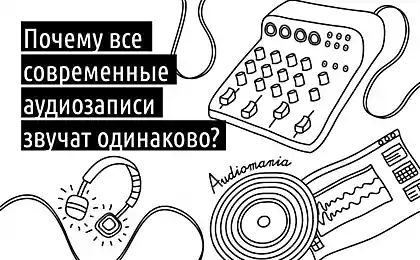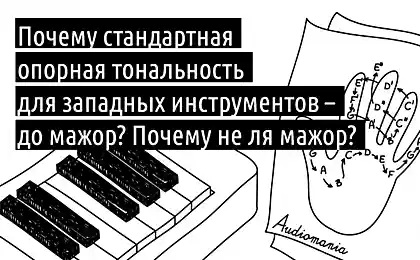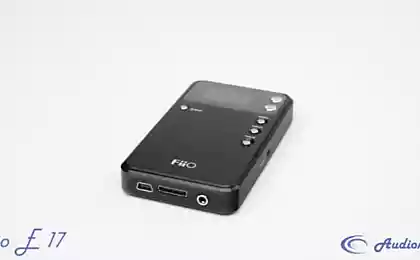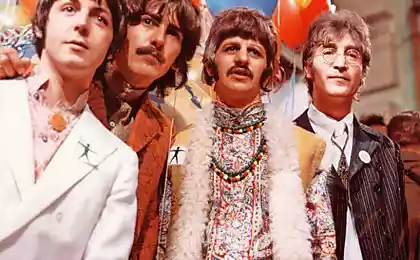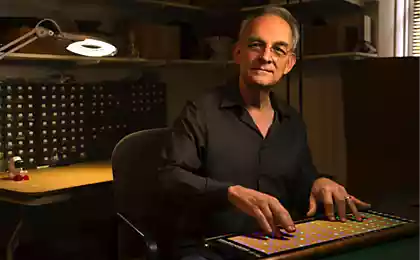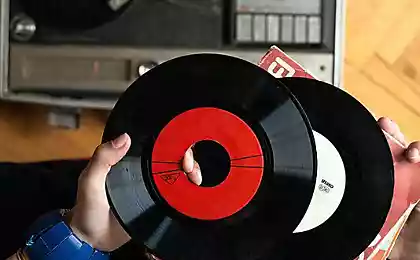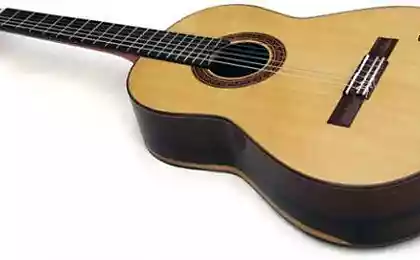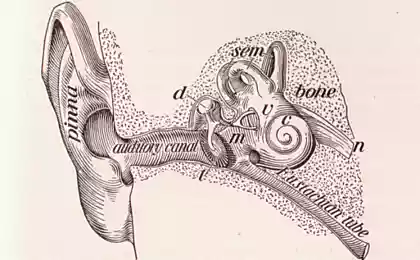1504
As the appearance of the recording of music has changed the music itself
89,550,244
Rob Weir ( Rob Weir ): The recording system determine the relationship between the composer and musician. The more musical notation, the greater the impact on performance of the composer. The less detailed record, the more freedom of action artist.
Initially, musical notation was not very detailed, but over time began to increase its accuracy. For example, in the music of the early Renaissance there was no notation for the tempo or dynamics - the choice remained the performer.
In baroque music used general-bass - reception when improvising musician, based on certain chords as they are now doing modern jazz performers.
In times of Beethoven's tempo was set by a metronome, but even that leaves no room for improvisation, for example, in the cadence.
Now look at Mahler's symphonies, written on the boundary of the XX century. On each page, it left a huge amount of detailed notes.
Yvonne Caruthers ( Yvonne Caruthers ): A Rob affects several important topics. I should add that, thanks to musical recordings, students can learn from the experience of past generations ("discovery" of Bach Mendelssohn).
Types notation for different composers differ from each other - how different their attitude towards musical notation. Beethoven often wrote Party concerts for piano and orchestra, but did not make a detailed recording party, played by himself. Why waste time on it? She was in his mind, and he knew how to play it. For this concert the orchestra could play the other with another pianist, Beethoven still had to record the piano part.
Some composers recorded all performance in the form of a sketch of the score for piano, leaving the orchestration last (or asked someone else to finish the job for them), others - were recorded in detail the full version.
Rob gave the example of Mahler as one of the pieces of music recorded in detail, I think that the most elaborate his compositions recorded Bartok. At the end of each piano pieces he refined during its playback. This meant that if you perform a play strictly at a given temperature, its duration will be a certain number of seconds (or minutes). It was a response to the emergence of Bartok's expressive performers who too freely, in his opinion, altered product.
David Lee ( David Leigh ): I believe that musical notation greatly influenced the history of music.
Music, unlike text in a book written by means of abbreviations. To understand the book enough to read it aloud or silently - the order in which the words are arranged, affects our perception of you - we can imagine the events. As for the music, it just "reading" the note, you can not get a full understanding of the music. The fact that the musicians have a special set of "shorthand" characters, is incredibly important.
Let's look at three ways of visualizing music, and how to change our perception of it, if they have become the main form of notation.
The spectrogram - is the ratio of the length, frequency and amplitude of the sound. The picture below shows the spectrogram of a simple melody played on a violin.

That speech spectrogram Rachel Gilmore (Rachele Gilmore), who performs in cadence doll Olympia aria from the opera "Tales of Hoffmann»:
Obviously, this way of writing reflects well the manner of performance, but slightly transmits pitch and rhythm. In other words, if the composer wrote the work in this way, I would have spent a lot of time in clarifying exactly what tone to play every note. This system is not very suitable for the accurate transmission of pitch and rhythm.
So all the performers will sound almost the same. In theory, there would be one perfect performance, and all would be equal to it. That is why we do not use such a system, but if we still used it, our understanding of the music would be very different.
«Gvidonova" hand
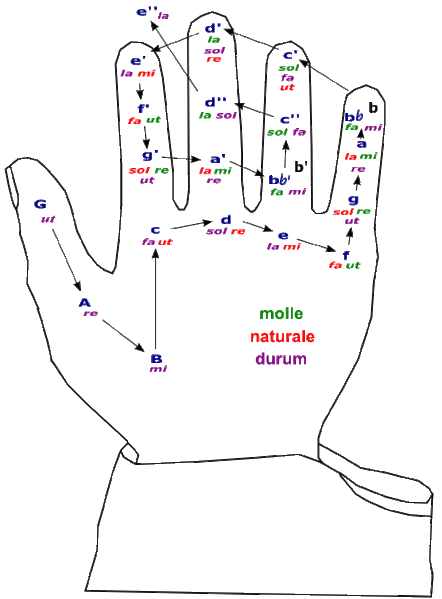
The essence of this system is that it can help to transfer audio transitions using sign language. She contributed to the development of counterpoint, the concept of popular music of the time, as it allows to build a harmonic is very simple and convenient way.
"Gvidonova" hand mainly used in multi-voiced singing and rarely was used to standardize the rhythm and create complex harmonics. If music is in a form that would be easier to improvise, and, most of all, we would not see a block chords that are so popular today.
«standard musical notation»
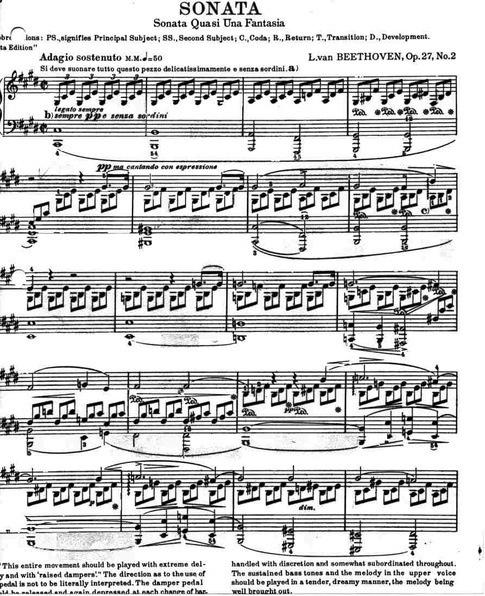
In comparison with the other systems described above, this is clearly marked duration sounds. It pinpoint their height and tone melodies, as well as provide guidance on the nature of the latter, but strictly within the specified rate. Information about the level of performance expressiveness and figuratively transferred depends on the context.
The system does not specify how loud should be "forte", or gently to sound "piano", which means "dolce" or "tenuto." In this system, the contractor less control than others, but that does not stop improvising.
I wonder what it could have been quite different. When this system was created, written music was not much, and the composer was always present in the performance of his work. Contractor was allowed to improvise, but the recording system clearly indicates the power of sound and rhythm, thus avoiding errors in interpretation.
Now it is not so important, but we continue to use the system - it has opened us the music we know today.
It is said that pop music is rarely recorded in this way, because the elements that describe the standard notation, it is not used. Notation contemporary classical music contains a lot of notes relating to melody and rhythm (ie, that can control the composer), because the methods of teaching music remained the same.
If, for example, composers began to record music using a spectrogram, the performers would have to train very different way. Written music is very different to the existing.
P.S. Different aspects of the history of music, the nuances and interesting facts - it's our passion, we are happy to share our blog and podcasts . i>
Source: geektimes.ru/company/audiomania/blog/267690/
Rob Weir ( Rob Weir ): The recording system determine the relationship between the composer and musician. The more musical notation, the greater the impact on performance of the composer. The less detailed record, the more freedom of action artist.
Initially, musical notation was not very detailed, but over time began to increase its accuracy. For example, in the music of the early Renaissance there was no notation for the tempo or dynamics - the choice remained the performer.
In baroque music used general-bass - reception when improvising musician, based on certain chords as they are now doing modern jazz performers.
In times of Beethoven's tempo was set by a metronome, but even that leaves no room for improvisation, for example, in the cadence.
Now look at Mahler's symphonies, written on the boundary of the XX century. On each page, it left a huge amount of detailed notes.
Yvonne Caruthers ( Yvonne Caruthers ): A Rob affects several important topics. I should add that, thanks to musical recordings, students can learn from the experience of past generations ("discovery" of Bach Mendelssohn).
Types notation for different composers differ from each other - how different their attitude towards musical notation. Beethoven often wrote Party concerts for piano and orchestra, but did not make a detailed recording party, played by himself. Why waste time on it? She was in his mind, and he knew how to play it. For this concert the orchestra could play the other with another pianist, Beethoven still had to record the piano part.
Some composers recorded all performance in the form of a sketch of the score for piano, leaving the orchestration last (or asked someone else to finish the job for them), others - were recorded in detail the full version.
Rob gave the example of Mahler as one of the pieces of music recorded in detail, I think that the most elaborate his compositions recorded Bartok. At the end of each piano pieces he refined during its playback. This meant that if you perform a play strictly at a given temperature, its duration will be a certain number of seconds (or minutes). It was a response to the emergence of Bartok's expressive performers who too freely, in his opinion, altered product.
David Lee ( David Leigh ): I believe that musical notation greatly influenced the history of music.
Music, unlike text in a book written by means of abbreviations. To understand the book enough to read it aloud or silently - the order in which the words are arranged, affects our perception of you - we can imagine the events. As for the music, it just "reading" the note, you can not get a full understanding of the music. The fact that the musicians have a special set of "shorthand" characters, is incredibly important.
Let's look at three ways of visualizing music, and how to change our perception of it, if they have become the main form of notation.
The spectrogram - is the ratio of the length, frequency and amplitude of the sound. The picture below shows the spectrogram of a simple melody played on a violin.

That speech spectrogram Rachel Gilmore (Rachele Gilmore), who performs in cadence doll Olympia aria from the opera "Tales of Hoffmann»:
Obviously, this way of writing reflects well the manner of performance, but slightly transmits pitch and rhythm. In other words, if the composer wrote the work in this way, I would have spent a lot of time in clarifying exactly what tone to play every note. This system is not very suitable for the accurate transmission of pitch and rhythm.
So all the performers will sound almost the same. In theory, there would be one perfect performance, and all would be equal to it. That is why we do not use such a system, but if we still used it, our understanding of the music would be very different.
«Gvidonova" hand

The essence of this system is that it can help to transfer audio transitions using sign language. She contributed to the development of counterpoint, the concept of popular music of the time, as it allows to build a harmonic is very simple and convenient way.
"Gvidonova" hand mainly used in multi-voiced singing and rarely was used to standardize the rhythm and create complex harmonics. If music is in a form that would be easier to improvise, and, most of all, we would not see a block chords that are so popular today.
«standard musical notation»

In comparison with the other systems described above, this is clearly marked duration sounds. It pinpoint their height and tone melodies, as well as provide guidance on the nature of the latter, but strictly within the specified rate. Information about the level of performance expressiveness and figuratively transferred depends on the context.
The system does not specify how loud should be "forte", or gently to sound "piano", which means "dolce" or "tenuto." In this system, the contractor less control than others, but that does not stop improvising.
I wonder what it could have been quite different. When this system was created, written music was not much, and the composer was always present in the performance of his work. Contractor was allowed to improvise, but the recording system clearly indicates the power of sound and rhythm, thus avoiding errors in interpretation.
Now it is not so important, but we continue to use the system - it has opened us the music we know today.
It is said that pop music is rarely recorded in this way, because the elements that describe the standard notation, it is not used. Notation contemporary classical music contains a lot of notes relating to melody and rhythm (ie, that can control the composer), because the methods of teaching music remained the same.
If, for example, composers began to record music using a spectrogram, the performers would have to train very different way. Written music is very different to the existing.
P.S. Different aspects of the history of music, the nuances and interesting facts - it's our passion, we are happy to share our blog and podcasts . i>
Source: geektimes.ru/company/audiomania/blog/267690/
The concept of a transparent panoramic cab passenger aircraft
Thunderbolt 3. Everything you need in one cable and a little more


